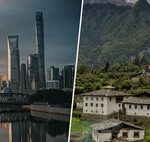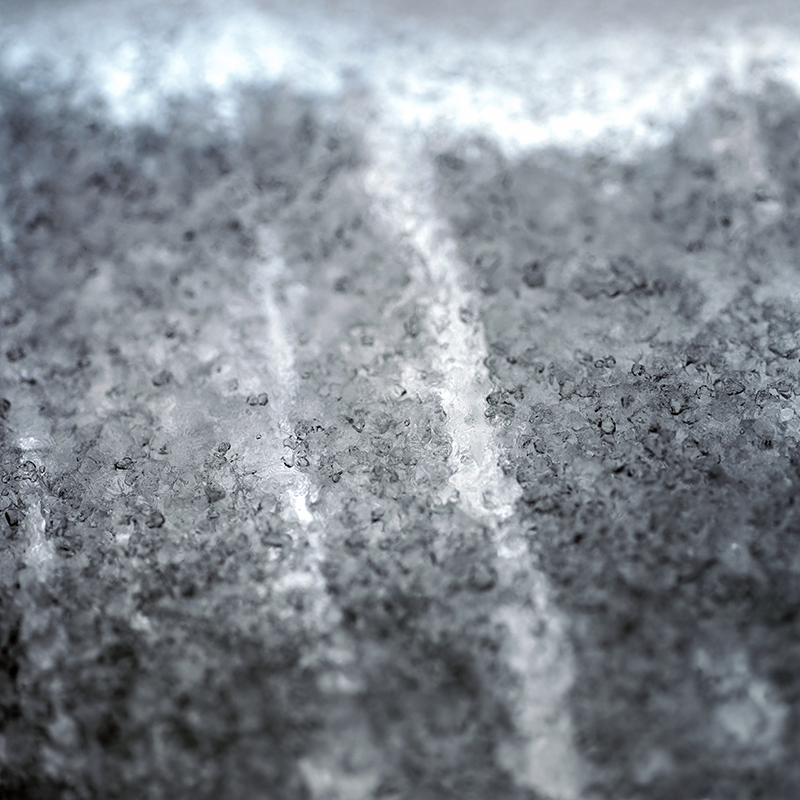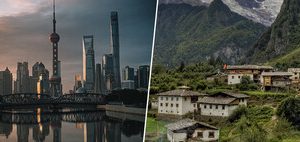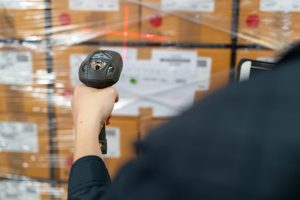Valeska Muñoz, UNAB Journalist.- What is an ice witness? Few of us know what it refers to, since it is a very specific scientific research object that glaciologists study in their laboratories. It is a cylindrical sample of ice that is extracted by drilling deep into a glacier.. This piece makes it possible to study the characteristics of the ice accumulated over hundreds of thousands of years, covering different climatic cycles. Thus, the deepest levels keep records of remote events, while the most superficial sections speak of more recent phenomena.
This cold and mysterious object tells us the story of climate change whose footprints it has marked. In it you can read the progressive increase in temperature, changes in rainfall patterns, the reduction of snow-covered surfaces, storms and droughts.
He project “Ice Witnesses» is an installation located in the Valparaíso Cultural Park that is offered to the visitor as a significant learning experience about ice cores, glaciers and different aspects of climate changeemphasizing the Valparaíso region to question a nearby community.
The initiative arises from a multidisciplinary collaboration between Creative Campus, the Vice-Rector for Research and Doctorate and the Faculty of Engineering of the Andrés Bello University (UNAB), responding to the need to transfer environmental concern to the publicstimulating their sensitivity and interest in the subject and awakening interest in glaciology and its scientific practice, as a relevant actor for understanding the effects of climate change in the region of Valparaíso and Chile.
The project was awarded under the Public Science Contest of the Ministry of Science, Technology Knowledge and Innovationwhose objective is to finance projects that socialize scientific knowledge and integrate it into people’s daily lives, in order to become resources that allow us to face future challenges with decisions based on evidence.
The exhibition will open its doors the last week of April 2023 and will be open for three months. The official launch will take place on Wednesday, May 3 at 12:00.
Learning experience
The most recent report of the Intergovernmental Panel on Climate Change delivered solid evidence on the decrease in rainfall and increase in atmospheric temperature in our country. Although this year was an exception, last year was one of the driest in the historical meteorological record and that is the trend that has been sustained in the long term.
This The exhibition project is for visitors to make contact with the phenomenon, experience it and integrate it into their knowledge. For this, it integrates a multidisciplinary team of scientists, artists, architects, communicators, who come together to generate a meaningful learning experience through sensory stimuli that transform perception.
He The main center of the installation is a showcase where ice cores extracted from a glacier in the Andes Mountains in the Valparaíso region are refrigerated.. This piece was extracted by the same team members, led by Francisco Fernandoy, an expert glaciologist on the subject, a UNAB researcher who has dedicated himself to studying ice cores, being a benchmark in the discipline. Together with his assistant, Ana Olivares, he is in charge of the scientific content that the project develops.
A fundamental milestone of the work is precisely this expedition to the glacier to extract the core, which constituted a first immersion experience for the project team, giving the work a performative substrate. He Record of this journey will also be part of the visual material that visitors will be able to see inside the installation.. On the other hand, a second audiovisual development will show the ice witness as an object of study in the laboratory, among other experiences.
The installation and assembly design is framed in a support designed by the architect Francisco García, academic and director of ServCREA of Campus Creativo UNAB, with the support of Juan Gili and Alexander Meneses. Its structure was developed together with the company Tecno Fastwhere spaces are distributed around the ice core that welcome the visitor to involve them in a journey through images, ideas, sounds, lights and data that creatively and didactically deliver information related to glaciers and climate change in general.
For this, we worked together with the audiovisual producer Lucas Rojas, the infographic designer Juan Pablo Bravo, the graphic designer Valentina Pizarro and the experts in digital development Pablo Ortúzar, Fabián Andrade and Javier Garay. In the general direction, meanwhile, is the journalist and communications coordinator of the UNAB Vice-rector for Research and Doctorate, Victoria Martínez.
Mediation and extension
There will be permanent guided tours establishing a dialogue with the contents that the project proposes. There will also be a series of talks at the Valparaíso Natural History Museum, with specialists in climate change issues.
The exhibition will be part of the Artistic Education Week (SEA) that will take place between May 15 and 19. It is an international celebration, promoted by UNESCO, which seeks to sensitize the international community about the importance of artistic education; and promote cultural diversity, intercultural dialogue and social cohesion.
On the other hand, another activity associated with the exhibition will be the V Congress of the Chilean Society of the Cryosphere, organized by the Chilean Society of the Cryosphere (SOCHICRI), in conjunction with the Universidad Andrés Bello and the Universidad de Playa Ancha.
All content can be visited virtually on https://hielowitnesses.com/













